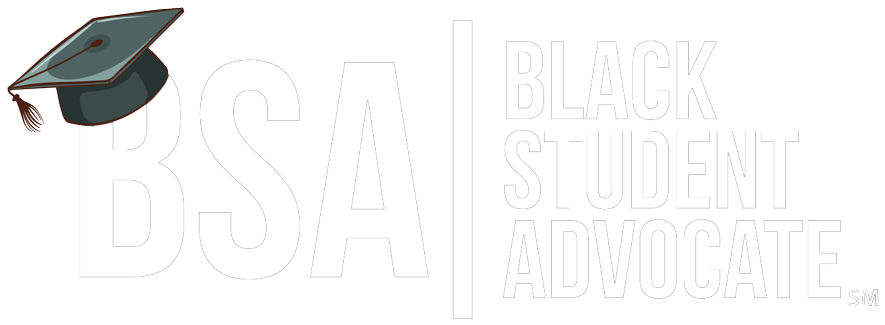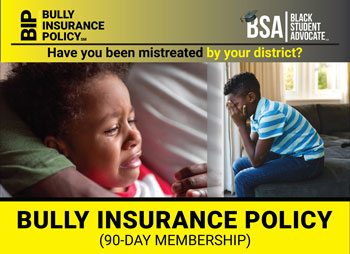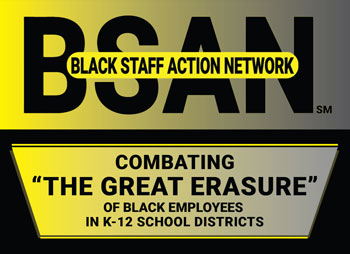At The Black Student Advocate Network, we believe that protecting Black childhood demands more than reform—it demands recognition. Recognition that violence isn’t always loud; sometimes it’s the soft echo of exclusion, the weight of being criminalized, or the burden of walking through school corridors under constant, unspoken threat.
In this blog, we explore the multifaceted nature of violence in Black schools, its trauma, and how advocates, educators, families, and communities can work together to heal and protect.
1. The Landscape of Discipline Disparities: When Discipline Becomes Trauma
1.1 Historical Roots of Disproportionate Punishment
- The overdisciplining of Black students isn’t accidental—it is deeply rooted in structural racism. From the legacy of segregation to zero-tolerance policies, schools have long treated Black behavior through a punitive lens.
- Government data shows Black students are significantly more likely to face exclusionary discipline.
1.2 Statistical Realities
- Black students are disproportionately disciplined: they represent a smaller fraction of school enrollment but a much larger share of suspensions, expulsions, and arrests.
- These disciplinary actions are not just administrative inconveniences—they remove Black children from the classroom, interrupt their learning, and erode their trust.
1.3 The Trauma Behind the Numbers
- Each suspension, each arrest referral, is more than a statistic. For a child, it’s a message: “You don’t belong,” or “You are a problem.”
- That repeated message creates stress, fear, and a sense of alienation. Over time, children internalize it, leading to anxiety, low self-esteem, or even mental health issues.
- Being separated from peers (through suspension or exclusion) also disrupts relationships and community, depriving students of stability and belonging.
2. The Role of Policing: From School Resource Officers to Arrests
2.1 The Reality of Over-Policing in Black Schools
- Black students are overrepresented in school-based referrals to law enforcement and arrests.
- According to civil rights advocates, many Black students attend schools that prioritize security over support, sometimes having more police officers than counselors.
- This militarization of school discipline contributes to trauma: children see their school not as a place to learn, but as a place to be policed.
2.2 Consequences of Criminalization
- When behavioral issues are met with law enforcement rather than restorative practices, Black children are funneled into the so-called “school-to-prison pipeline.”
- Arrests and criminal records in school can have lifelong ramifications: they shape how society sees Black youth and limit future educational and economic opportunities.
- Moreover, disputes that might have been resolved with conflict mediation or counseling instead escalate into legal matters, reinforcing a cycle of punishment.
2.3 Psychological Impact
- The presence of police in schools sends a constant signal: students are viewed as potential threats.
- For Black students, many of whom already face societal racism, this can produce chronic stress.
- Trauma from policing doesn’t just affect behavior—it affects identity. Black youth may internalize dangerous stereotypes, feeling they are perceived as “risky,” even before they open their mouth to speak.
3. Bullying, Harassment, and Racialized Violence
3.1 Emotional and Racialized Bullying
- Bullying in schools is not always random – for Black students, it’s often rooted in race and identity. Data shows a significant portion of reported harassment in schools is based on race.
- This kind of bullying reinforces othering and conveys to Black youth that they are outsiders in their own institution.
3.2 Intersectional Violence
- Black students who are girls, or who have disabilities, or who identify as LGBTQ+, often face compounded forms of violence and exclusion.
- For example, discipline data shows that Black girls are frequently disciplined at higher rates than girls of other races for behaviors labeled as “defiance” or “disrespect.”
- This intersectional violence intensifies trauma—it’s not just about race, but about where race meets gender, disability, or sexuality.
3.3 Long-Term Emotional Toll
- Victims of bullying often suffer silently. The daily fear of ridicule or exclusion erodes trust in peers and educators.
- Without intervention, harassment can lead to depression, anxiety, and post-traumatic stress.
- Black children may become hypervigilant—always monitoring the social climate, anticipating the next microaggression or overt insult.
4. The Silent Weight: Microaggressions, Implicit Bias & Emotional Violence
4.1 What Are Microaggressions in Schools?
- Microaggressions are small, often unintentional, slights that communicate negative or stereotyped assumptions. Examples in a school context include: teachers assuming a Black student will misbehave; commenting on how “well-spoken” a Black child is; or disproportionately calling on Black students only in discipline contexts.
- Over months and years, microaggressions accumulate, becoming a form of emotional violence.
4.2 Implicit Bias in Discipline Decisions
- Educators, like all humans, carry implicit biases. These can influence who gets punished, how severely, and for what reasons.
- Studies show that even when behavior is similar, Black students are more likely to be disciplined than their white peers.
- This bias not only affects trajectory (e.g., suspensions, expulsions) but also shapes daily interactions: how teachers speak, what they expect, and how they respond.
4.3 Emotional Trauma from Constant Othering
- The constant experience of being viewed through a deficit lens (“troublemaker,” “aggressive,” “discipline problem”) damages self-worth.
- Children start to internalize negative narratives, believing they are fundamentally problematic.
- This emotional trauma undermines learning: a child who feels judged or misunderstood is less likely to engage, ask questions, or take academic risks.
5. Mental Health Consequences: From Trauma to Disparities
5.1 Mental Health and Racial Stress
- Evidence links experiences of racism in school settings with poor mental health outcomes.
- Black students who report having experienced racism in school are significantly more likely to report indicators of poor mental health, including suicidal ideation and substance use.
- The stress of navigating a hostile or neglectful school environment can be chronic — not just acute.
5.2 Academic & Behavioral Impacts
- Discipline removes students from classrooms, which can lower academic achievement, increase absenteeism, and raise dropout risk.
- Trauma affects cognitive functioning: memory, attention, self-regulation—all of which are vital for learning.
- Students may become disengaged or act out, not because they want to, but because survival in a harmful environment demands it.
5.3 The Cost of Silence
- Many schools lack trauma-informed supports: counselors, culturally competent psychologists, or restorative practices.
- Without safe, affirming spaces to process their experiences, Black children may internalize their stress or find unhealthy outlets.
- Over time, untreated trauma can lead to long-term health issues, including depression, anxiety, or behavioral disorders.
6. Pathways to Healing & Protection: What The Black Student Advocate Network Envisions
6.1 Centering Restorative Justice & Trauma-Informed Practices
- Schools must shift from punitive discipline to restorative justice: conflict circles, peer mediation, and repair sessions.
- Trauma-informed education means training all school staff (teachers, administrators, support staff) to recognize and respond to signs of trauma, not punish them.
- Investing in mental health resources — counselors, social workers, culturally affirming therapists — is non-negotiable.
6.2 Reimagining Safety: Less Policing, More Support
- Reassess the role of School Resource Officers (SROs). Black children should not feel criminalized in their own schools.
- Reallocate funding toward supports that actually promote student well-being: counselors, restorative justice practitioners, mentoring programs.
- Design school policies with student voice in mind: involve Black students in conversations about discipline, safety, and how to make school feel like a community.
6.3 Building Affirming School Cultures
- Professional development on racial bias, anti-racism, and culturally responsive teaching can help reduce microaggressions and implicit bias.
- Celebrate Black identities in school curricula: literature, history, art, and role models that reflect students’ lived realities.
- Foster peer support systems: mentorship programs, student-led affinity groups, and mental-health clubs that give Black students a space to be seen and heard.
6.4 Advocacy & Policy Change
- At The Black Student Advocate Network, we push for data transparency: schools must publicly report discipline data disaggregated by race, gender, disability, etc.
- Advocate for state and district policies that limit exclusionary discipline and criminalization, and encourage restorative approaches.
- Support families and communities: train parents to advocate for trauma-informed policies, connect them with legal and mental health resources, and raise collective voices for systemic change.
6.5 Leveraging Community Partnerships
- Partner with local nonprofits, faith groups, and mental health organizations to build support networks inside and outside school walls.
- Encourage after-school programs that provide safe spaces, mentoring, and healing-centered activities.
- Develop peer-led workshops for students, educators, and families to understand trauma, racial stress, and resilience.
Conclusion
Protecting Black childhood is not just a moral imperative—it’s an urgent educational and public health necessity. The invisible trauma of violence in Black schools doesn’t always manifest as bruises or broken bones. It’s found in the constant threat of exclusion, the coldness of policing, the sting of microaggressions, and the silence when a child’s pain goes unheard.
At The Black Student Advocate Network, we commit to reimagining what school safety means. We refuse to settle for “less harm” when what our children need is affirmation, healing, and belonging. We envision schools where discipline is restorative, where mental health is prioritized, and where Black students are seen, celebrated, and supported—not criminalized or isolated.
The journey ahead will not be easy. It involves challenging long-standing policies, confronting discomfort, and demanding structural change. But this is how we truly protect Black childhood: by acknowledging the violence, naming the trauma, and building systems that heal—not harm.







Share This Page